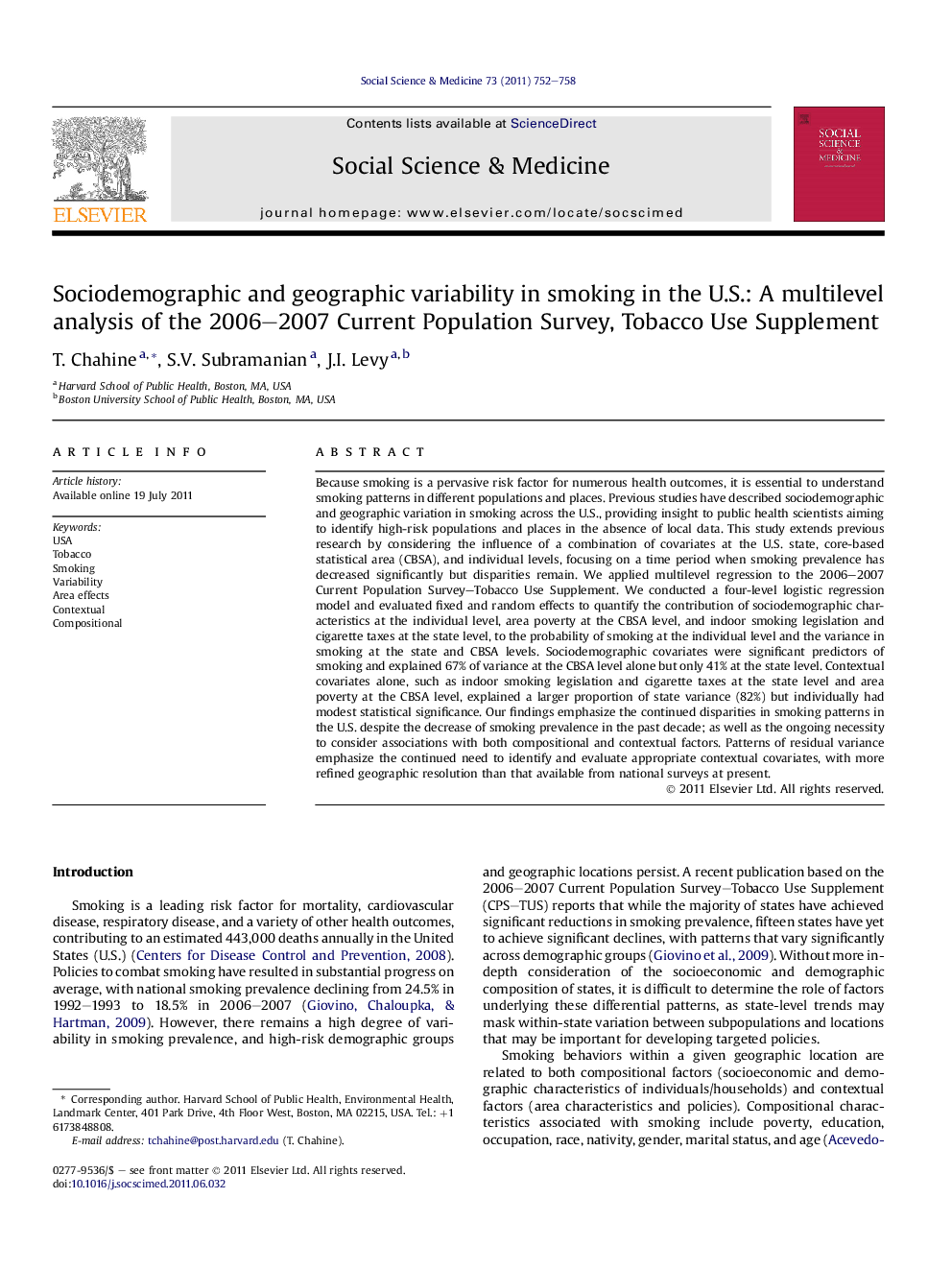| Article ID | Journal | Published Year | Pages | File Type |
|---|---|---|---|---|
| 952577 | Social Science & Medicine | 2011 | 7 Pages |
Because smoking is a pervasive risk factor for numerous health outcomes, it is essential to understand smoking patterns in different populations and places. Previous studies have described sociodemographic and geographic variation in smoking across the U.S., providing insight to public health scientists aiming to identify high-risk populations and places in the absence of local data. This study extends previous research by considering the influence of a combination of covariates at the U.S. state, core-based statistical area (CBSA), and individual levels, focusing on a time period when smoking prevalence has decreased significantly but disparities remain. We applied multilevel regression to the 2006–2007 Current Population Survey–Tobacco Use Supplement. We conducted a four-level logistic regression model and evaluated fixed and random effects to quantify the contribution of sociodemographic characteristics at the individual level, area poverty at the CBSA level, and indoor smoking legislation and cigarette taxes at the state level, to the probability of smoking at the individual level and the variance in smoking at the state and CBSA levels. Sociodemographic covariates were significant predictors of smoking and explained 67% of variance at the CBSA level alone but only 41% at the state level. Contextual covariates alone, such as indoor smoking legislation and cigarette taxes at the state level and area poverty at the CBSA level, explained a larger proportion of state variance (82%) but individually had modest statistical significance. Our findings emphasize the continued disparities in smoking patterns in the U.S. despite the decrease of smoking prevalence in the past decade; as well as the ongoing necessity to consider associations with both compositional and contextual factors. Patterns of residual variance emphasize the continued need to identify and evaluate appropriate contextual covariates, with more refined geographic resolution than that available from national surveys at present.
► Geographic and demographic disparities in smoking rates in the United States persist in spite of recent overall reductions. ► Demographic variables predict smoking rates and explain significant geographic variance but not differences between states. ► Contextual factors (e.g., state laws, area poverty) have modest statistical significance but explain between-state variance. ► Both population composition and contextual factors must be considered when explaining smoking patterns.
